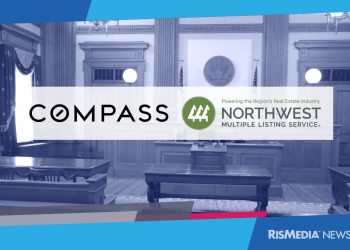 RISMEDIA, July 30, 2009-As the Treasury Department urges mortgage servicing companies to step up their efforts to stop foreclosures, the latest available figures show that the number of households at risk of foreclosure is seven times the number of loan modifications, and the gap has increased steadily for the past year.
RISMEDIA, July 30, 2009-As the Treasury Department urges mortgage servicing companies to step up their efforts to stop foreclosures, the latest available figures show that the number of households at risk of foreclosure is seven times the number of loan modifications, and the gap has increased steadily for the past year.
Although loan modifications are up from very low levels last year, the rapid growth of serious delinquencies and new foreclosure starts is swallowing modest gains in efforts by loan companies to fix the massive number of loans headed for foreclosure. During the first quarter of this year, nearly 500,000 loan modifications were completed, but foreclosure starts and serious delinquencies during that period edged up to nearly 3.5 million.
Without significant intervention, foreclosures are on track to mount up to 13 million during the next five years. In 2009 alone, 69 million homeowners who happen to live near foreclosures will see their wealth shrink as property values decline by $502 billion.
“Continuing this same course would be disastrous,” said Mike Calhoun, president of the Center for Responsible Lending (CRL). “The challenge of closing the gap between the foreclosure epidemic and foreclosure prevention represents a major public policy issue that will affect all Americans.”
During the past two years, lenders have strongly resisted key policy proposals to stop the foreclosure epidemic, such as allowing home loans to be modified in bankruptcy court. Loan servicing companies asked for the opportunity to address the problem through the Home Affordable Modification Program (HAMP) launched in March. The New York Times has been reported that about 130,000 loans have been modified under HAMP, but this number is dwarfed by the 3.5 million foreclosures that are expected to be initiated this year.
In CRL testimony presented recently before the House and Senate Joint Economic Committee, Keith Ernst, director of Research, emphasized that risky loans, not risky borrowers, led us to today’s mortgage troubles. Ernst cited research from the University of North Carolina and CRL which shows that people who received subprime loans were three times more likely to face foreclosure than those who received lower-cost, primarily fixed-rate mortgages- even when the two borrowers had comparable risk profiles. When multiple risks were layered into the same loan, the risk of default was four to five times higher on subprime mortgages.
To help people facing foreclosure, CRL urges Congress to do the following:
-Ensure that the Administration’s current efforts to prevent foreclosures- the Home Affordable Program and the Hope for Homeowners Program- work as effectively as possible, and that homeowners who avoid foreclosure don’t get set back again by the tax consequences of loan modification and reduced loan balances.
-Lift the ban that now prevents homeowners from seeking loan modifications on their primary residence, as they can on investment properties and other types of loans.
And to keep the current disaster from happening again:
-Pass legislation requiring lenders to determine a consumer’s ability to repay the mortgage, and encourage the Federal Reserve Board to finalize its proposed rules banning yield spread premiums (kickbacks that encourage mortgage brokers to overcharge on home loans).
-Create a Consumer Financial Protection Agency as outlined in H.R. 3126, the Consumer Financial Protection Act of 2009, which prioritizes consumer protection and focuses on preventing abusive financial practices before they harm families and the economy.
For more information, visit www.responsiblelending.org.










